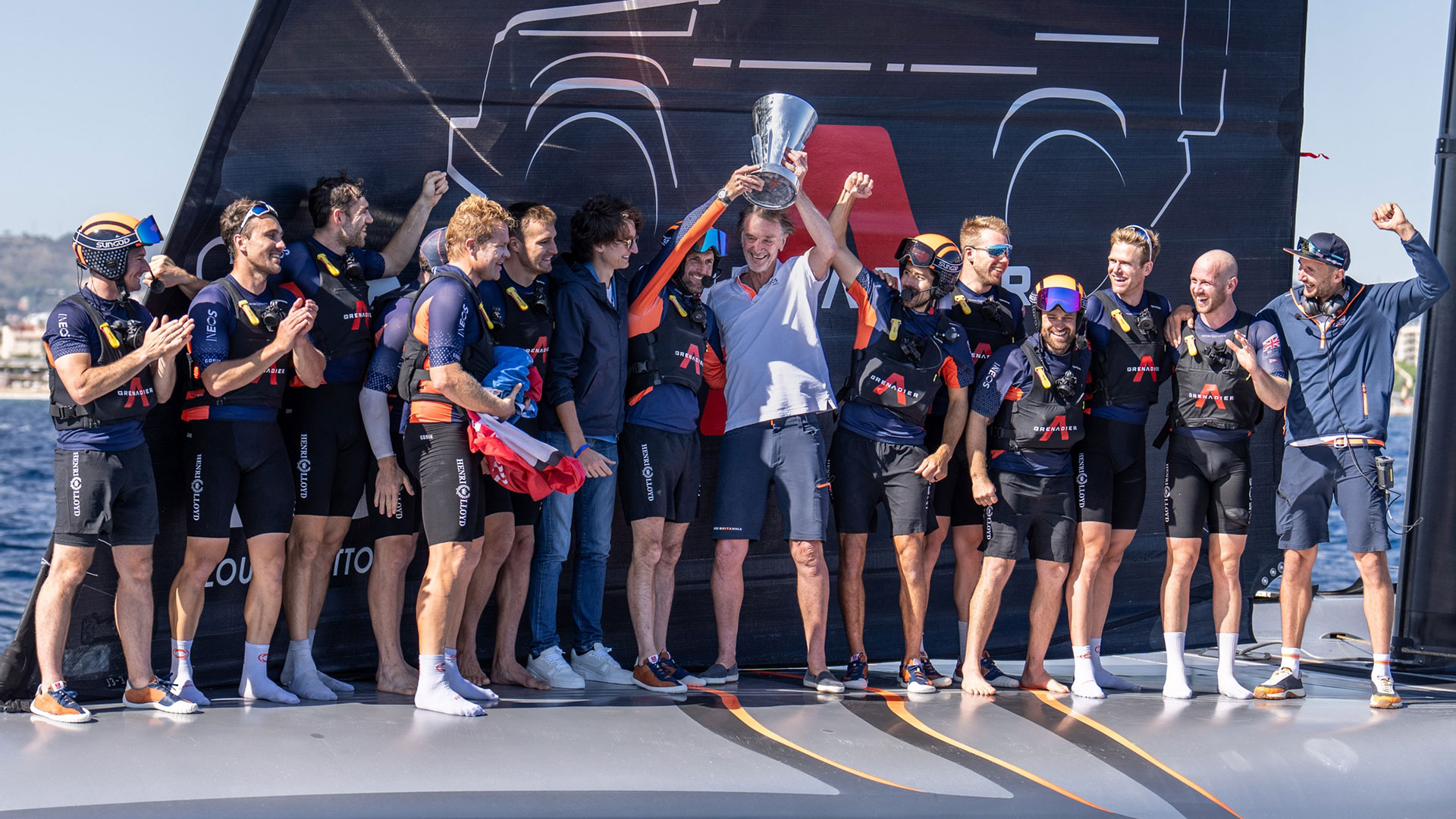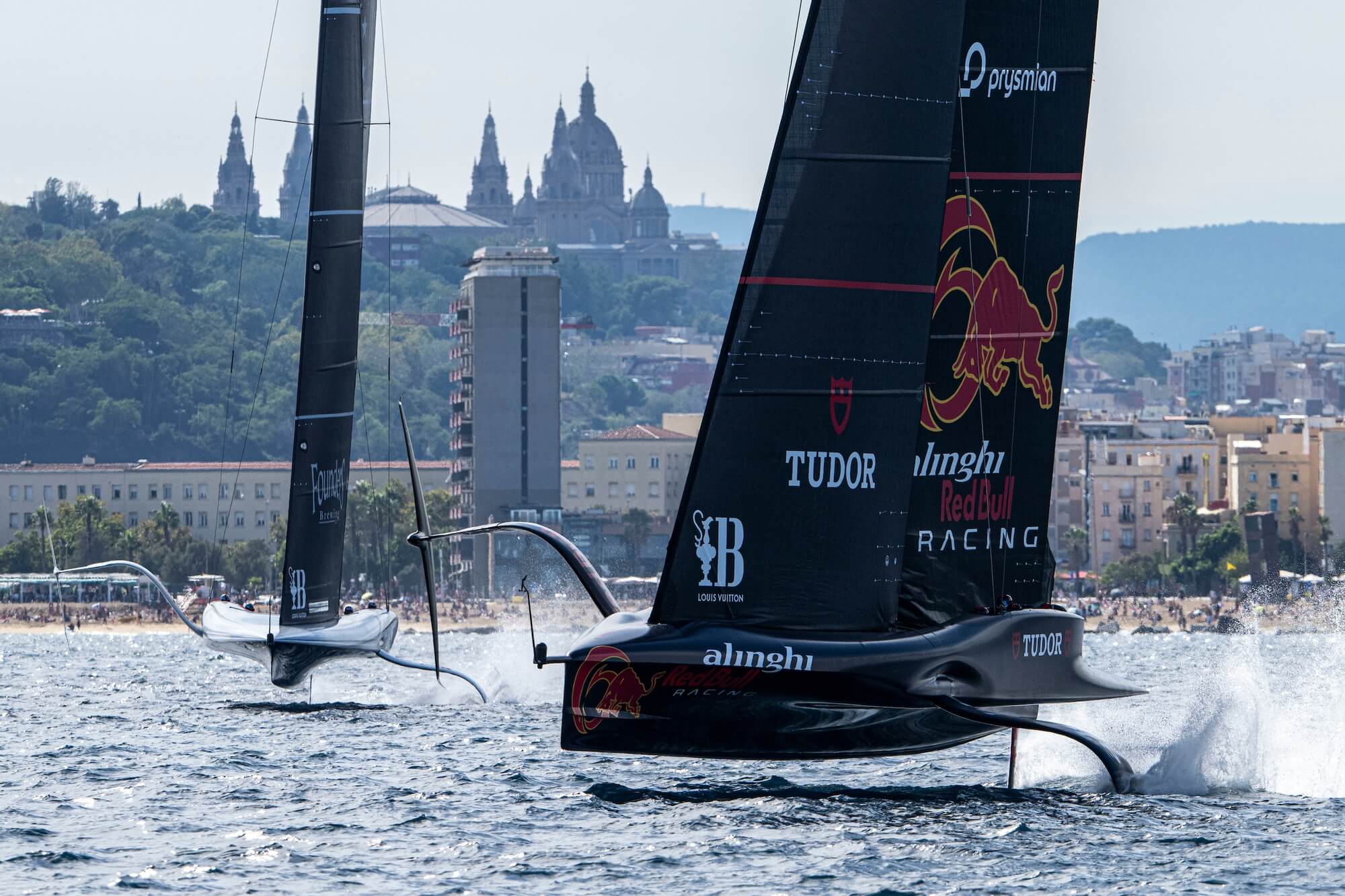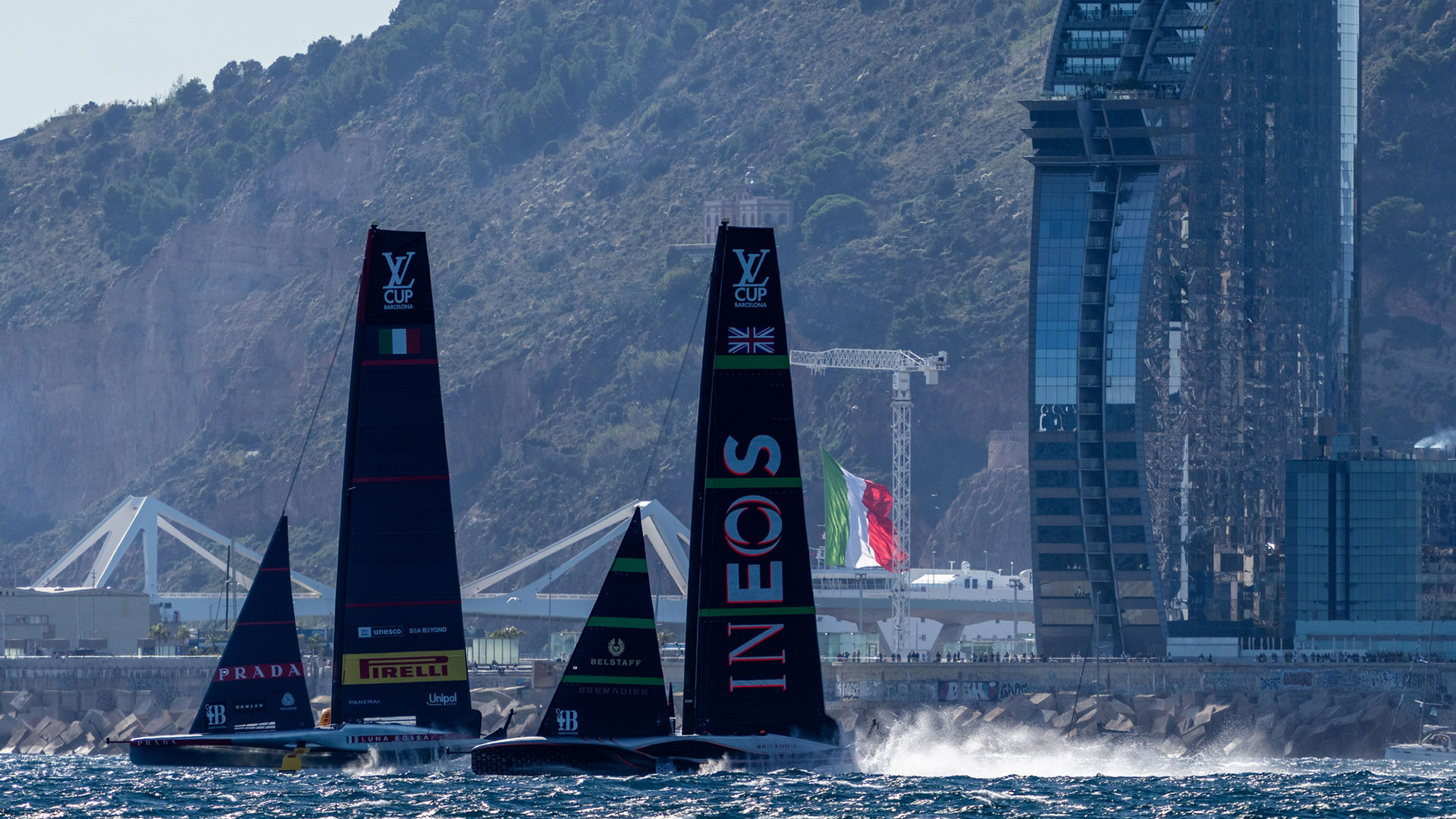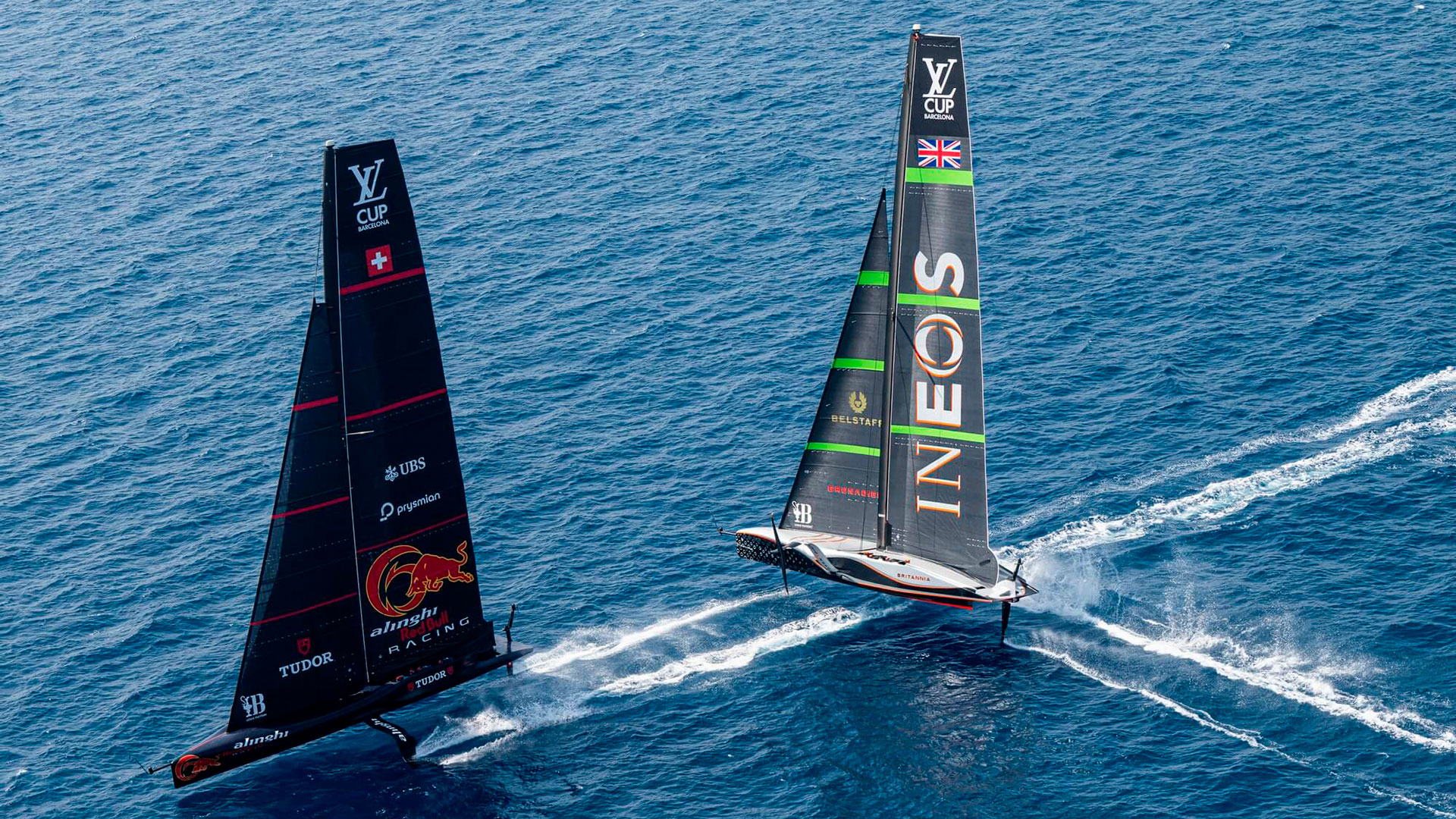
Flying boats: The Formula 1 of the sea
In an exciting breakthrough in the world of sailing, the so-called "flying boats" are taking to the seas spectacularly, being compared to iconic Formula 1 cars in terms of speed, innovation, and adrenaline.
For years now, we have seen new and increasingly innovative boats or vessels each year. Therefore, since 2014, we have been able to witness Foiling Week, with the goal of promoting foiling (flight-mode sailing) and making it safer, more accessible, and sustainable.
Characteristics of the AC75 or Flying Boats
There are different models of boats that can be considered "flying boats." It could be said that the most popular ones are the AC75, which compete in the America’s Cup. However, others are also well-known, such as the IMOCA, catamarans like those in SailGP, the F50s, or monohulls that also use foils.
These boats stand out for their innovative features and advanced technologies that allow them to lift above the water and sail at extremely high speeds. They all have similar characteristics:
Hydrofoils:
A distinctive feature of flying boats is the incorporation of hydrofoils or foils. These wing-shaped aerodynamic structures extend from the hull and generate lift when the boat reaches a sufficient speed.
The lift allows the boat to rise above the water, reducing friction and enabling faster sailing. Foils are essential for maintaining balance as the boat glides over the water.
Tilting Hull:
The hulls of the AC75 are designed to tilt or lift out of the water when the boat reaches sufficient speed. This significantly reduces water resistance and allows the boat to fully lift onto the hydrofoils.
Extreme Speeds:
The AC75 and other flying boats are known for their extreme speeds. They can sail at speeds exceeding 50 knots (approximately 93 kilometers per hour), making them some of the fastest vessels on the water.
Cabins:
To protect the crew from high speeds and water splashes, many of these boats feature enclosed cabins that provide safety and comfort for the sailors.
High-Tech Equipment:
These types of vessels use advanced control systems, including sensors and electronic systems, to monitor and adjust the position of the hydrofoils, speed, and direction.
Therefore, precise coordination is required to maintain flight and avoid accidents.
Aerodynamic Design:
The design of these boats resembles that of an airplane more than a traditional boat. They are designed with aerodynamic shapes that reduce air and water resistance.
Good aerodynamic work allows the boat to move more efficiently through the water and also helps generate the necessary lift to fly on the hydrofoils.
High-Level Competitions:
Flying boats like the AC75 are used in elite competitions such as the America’s Cup, where highly skilled sailing teams compete in thrilling and highly technical races. These competitions are discussed below.
WHY DO THESE TYPES OF VESSELS FLY?
Nicolás Bailey from the Alinghi team explains it in an interview with El Periódico:
These boats use advanced technology with foils, which are like airplane wings, to lift the hull above the water. The main objective is to reduce friction, allowing the boat to sail faster. We have two main wings that lift the boat, and a rudder that stabilizes the pitch of the vessel, similar to how a rear stabilizer works on an airplane.
The function of the foils is not only to lift the boat but also to react to the force of the sails. Since we don’t have heavy keels underwater, the foil takes on this aerodynamic load. Additionally, during maneuvers, only one of the foils is in the water at a time; the other submerges when we switch sides and lift the previous one.
The rules allow us to use up to three foils, but they must all start from a base design with minor modifications. The challenge is in keeping the boat as close to the water as possible without touching it, which requires extremely precise control. Losing the rudder, which is crucial for stability, is something we want to avoid at all costs.
The size of the foils directly influences the boat's ability to take off at low speeds: the larger they are, the easier it is; the smaller they are, the longer it takes for the boat to lift. The boats are designed to be able to take off starting at 6.5 knots, as below that speed, there is no race.
All the energy to operate the sails is generated manually. We have a team of eight people, four of whom are dedicated exclusively to generating this energy. This is a constant job since the actuators that move the sails depend on the pressure generated by the team, and the energy storage capacity is limited.
Finally, although from the outside these boats may seem stable, the reality is that they are extremely unstable and difficult to handle. There is no autopilot, and everything depends on the skill and coordination of the crew, who make something that is, in reality, a constant challenge look easy.
Main Competitions
America's Cup
The America’s Cup is one of the most prestigious and oldest sporting events in history. This competition takes place every few years and attracts the most talented teams and sailors in the world. The America’s Cup is a 1-on-1 regatta where the club that holds the cup defends it against the challenging club.
The America’s Cup is not just a sailing competition. It is also a technological competition between countries. The organization requires that the technology incorporated into the vessel must be proprietary, within the selected class of the vessel. In this new edition that will be held soon, it is the AC75. Both the defender's and the challenger's boats must be designed and built entirely in the country that issues the challenge.
One of the rules that makes this regatta unique among flying boats is the one that allows both the defender and the challenger to establish, by mutual agreement, aspects such as the date, times, rules, that is, any condition for the regatta. As a novelty, in this 2024 edition, the New Zealand team (defending team) has proposed that the vessels used in the regatta be hydrogen-powered.
Sail GP
SailGP es una competición de vela que se disputa en varias localizaciones en todo el mundo cada año. Concretamente, se trata de una competición oficial de catamaranes en la que compiten equipos, actualmente nueve, que representan naciones.
Ahora mismo, se está disputando la cuarta temporada. En total son 11 carreras y se corona a un ganador general de la temporada, que es aquel que suma más puntos en total por los resultados obtenidos en las diferentes carreras disputadas en la temporada.
Las embarcaciones estilo barcos voladores que se utilizan en esta competición son los catamaranes F50, que pueden alcanzar velocidades de hasta 100km/h, por lo que se le considera uno de los veleros más rápidos del mundo. En estos F50, la tecnología juega un papel esencial. Cada elemento incorpora miles de sensores que ofrecen una información concreta y al instante sobre el comportamiento de la embarcación. Todos estos datos son utilizados para tomar determinadas decisiones.
69F Cup Europe
This is an open circuit for anyone with a desire for competition, speed, and tight races. This cup and European championship consists of 6 Grand Prix in 6 different locations.
Each Grand Prix consists of four days of competition with a maximum of six races per day, in different racing areas. The season trophy will be awarded to the team that achieves the highest score from their four best results.
The 69F class is a cutting-edge vessel that "flies" above the sea thanks to its hydrofoils. It is the same type of boat as the current America's Cup boats but on a smaller scale.
Ocean Race (IMOCA class)
Since the last Vendée Globe and in this latest edition (just concluded) of the Ocean Race, a new class of vessel has been added to these competitions. We are talking about the IMOCA class boats.
The IMOCA monohulls have been known for quite a few years, but recently these hydrofoils have been added to these flying boats, making them much faster and more competitive for long-distance races. With this technological innovation, these vessels have been able to increase speed by up to 15 knots compared to those without these “foils.”
Moth World Championships
The Moth World Championships is an annual international sailing regatta for Moth (dinghy sailing). This championship is organized by the host club on behalf of the International Moth Class Association and is recognized by World Sailing.
The Moth class boats are known for their speed and foiling capabilities. Moths are small, single-handed vessels, and the Moth World Championship is one of the premier competitions for this class of boats.
In conclusion, flying boats represent an exciting advancement in maritime technology that is and will continue to revolutionize the naval industry and sport sailing. By combining the innovation of foils with the ability to lift above the water, these boats offer impressive speeds, improved energy efficiency, and a new level of excitement and challenge for sailors.













_v2.svg)
_v2.svg)









_v2.svg)


